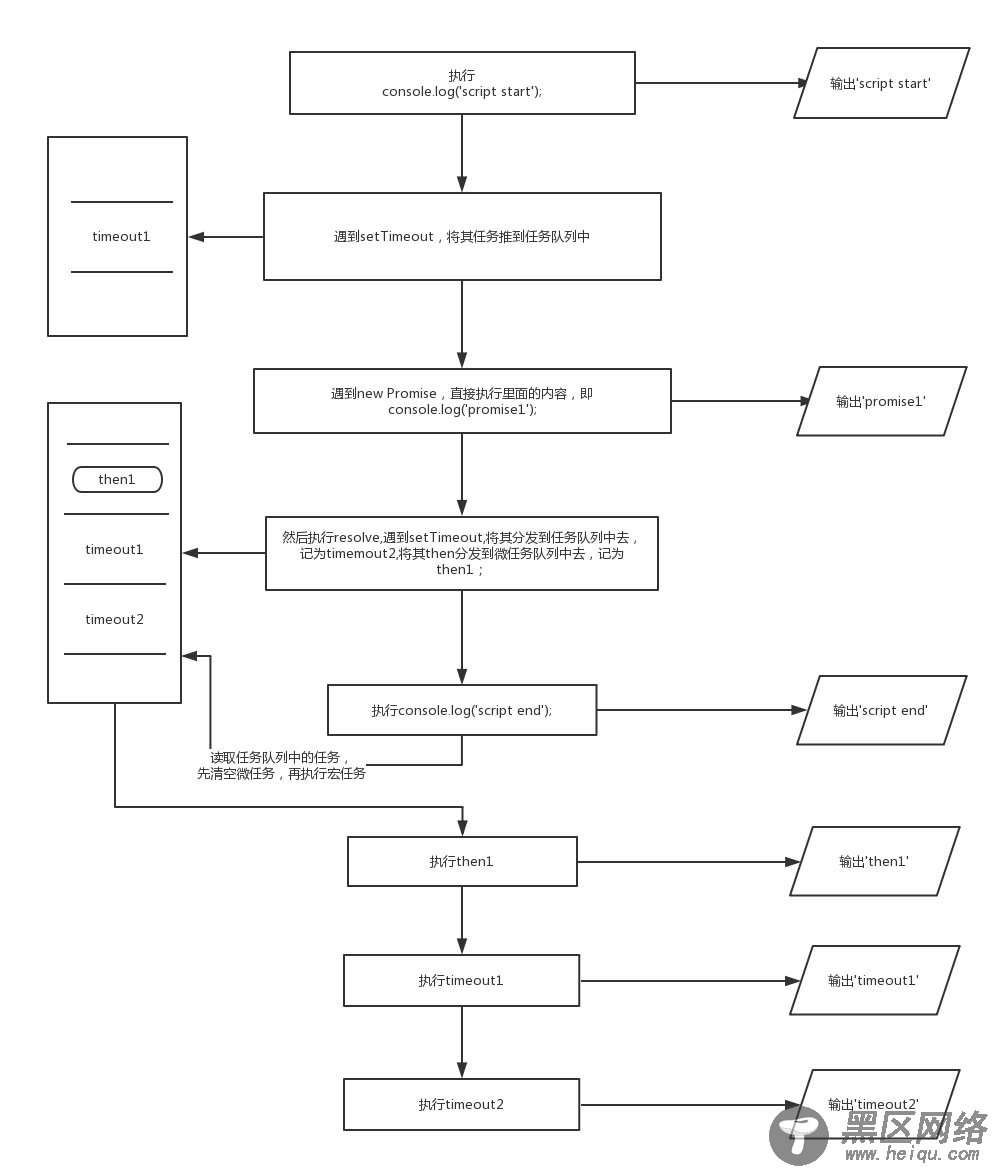console.log('script start'); setTimeout(function() { console.log('timeout1'); }, 10); new Promise(resolve => { console.log('promise1'); resolve(); setTimeout(() => console.log('timeout2'), 10); }).then(function() { console.log('then1') }) console.log('script end');
这个题目就稍微有点复杂了,我们再分析下:
首先,事件循环从宏任务 (macrotask) 队列开始,最初始,宏任务队列中,只有一个 scrip t(整体代码)任务;当遇到任务源 (task source) 时,则会先分发任务到对应的任务队列中去。所以,就和上面例子类似,首先遇到了console.log,输出 script start; 接着往下走,遇到 setTimeout 任务源,将其分发到任务队列中去,记为 timeout1; 接着遇到 promise,new promise 中的代码立即执行,输出 promise1, 然后执行 resolve ,遇到 setTimeout ,将其分发到任务队列中去,记为 timemout2, 将其 then 分发到微任务队列中去,记为 then1; 接着遇到 console.log 代码,直接输出 script end 接着检查微任务队列,发现有个 then1 微任务,执行,输出then1 再检查微任务队列,发现已经清空,则开始检查宏任务队列,执行 timeout1,输出 timeout1; 接着执行 timeout2,输出 timeout2 至此,所有的都队列都已清空,执行完毕。其输出的顺序依次是:script start, promise1, script end, then1, timeout1, timeout2
用流程图看更清晰:

总结
有个小 tip:从规范来看,microtask 优先于 task 执行,所以如果有需要优先执行的逻辑,放入microtask 队列会比 task 更早的被执行。
最后的最后,记住,JavaScript 是一门单线程语言,异步操作都是放到事件循环队列里面,等待主执行栈来执行的,并没有专门的异步执行线程。。
您可能感兴趣的文章:
